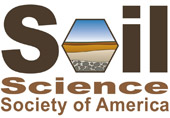The effects of compost applications on soil chemistry, greenhouse gas emissions, and the microbial ecosystem in a medium-useturfgrass setting.
The effects of compost applications on soil chemistry, greenhouse gas emissions, and the microbial ecosystem in a medium-useturfgrass setting.
Poster Number 34
See more from this Division: PosterSee more from this Session: Biodiversity and Ecological Sustainability
Saturday, March 8, 2014
Grand Sheraton, Magnolia Foyer
Turfgrass covers more land area and consumes more chemical inputs than any agricultural crop in the US. This reflects its economic importance to diverse industries, including tourism, athletics, and realty, which require healthy and aesthetic expanses of turf capable of withstanding high foot traffic. However, turf management has had a significant environmental impact through run-off and greenhouse gas (GHG) emission associated with synthetic fertilizer production and use. Run-off leads to eutrophication in nearby bodies of water, and GHGs contribute to climate change, which is likely to negatively impact turf management as water resources become scarcer and weather more extreme. To evaluate more sustainable turf management practices, we have partnered with University of Arizona’s Organic Land Stewardship Program that has replaced all synthetic inputs to campus turfgrass with compost and compost teas. These soil amendments are used in diverse agricultural settings as an alternative nutrient source to fertilizer, and can increase crop yields, promote soil carbon sequestration, decrease water use, and suppress pathogens. On control and treatment plots in actively-used medium-traffic campus turfgrass, we are characterizing the effect of applications over time on (i) soil physicochemistry (ii) microorganism community diversity, and (iii) ecosystem greenhouse gas emissions. Community profiling is being accomplished by high-throughput sequencing of 16S rRNA “identity” gene amplicons, analyzed using the QIIME package, providing a relatively detailed view into turfgrass microbial communities.
See more from this Division: PosterSee more from this Session: Biodiversity and Ecological Sustainability
